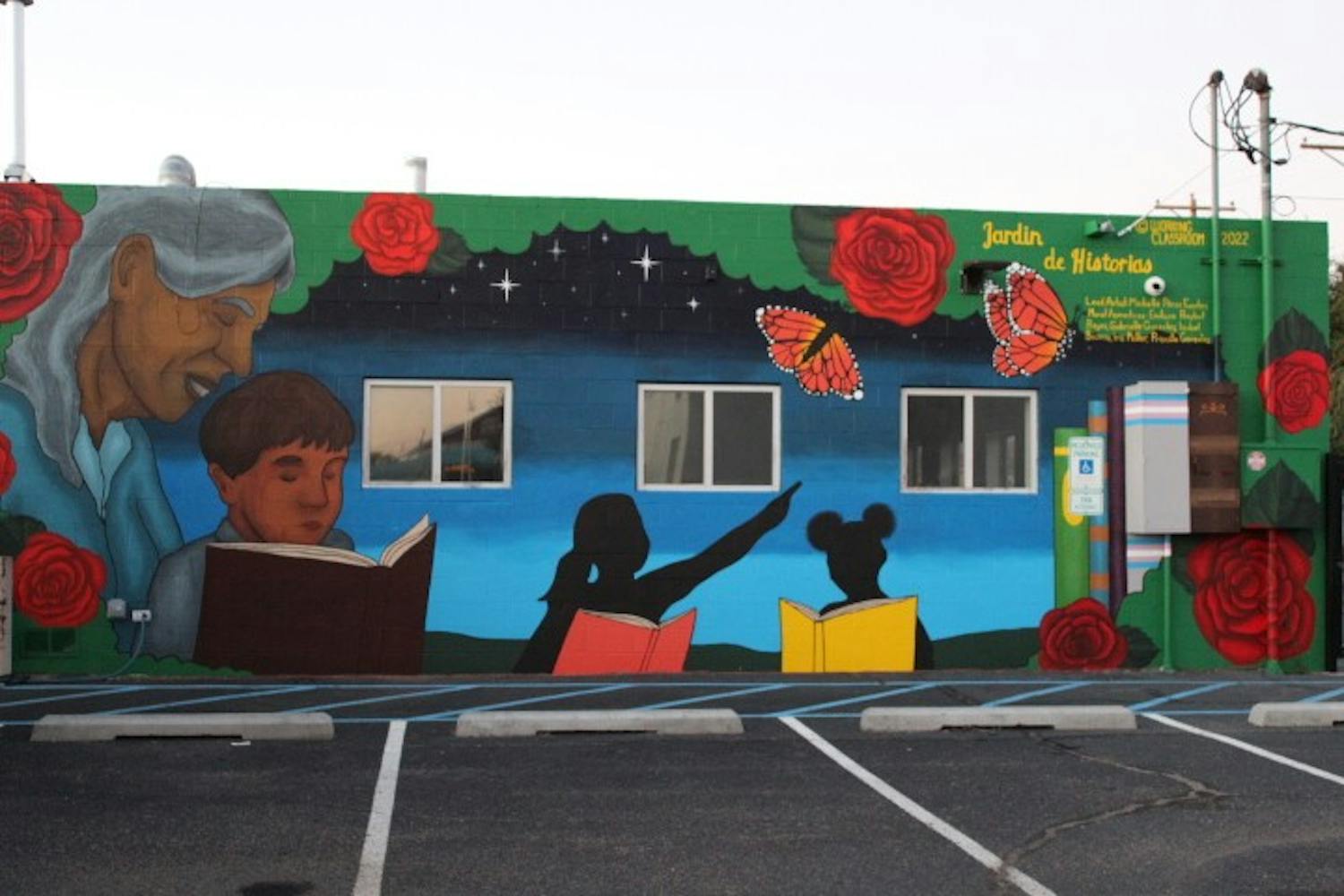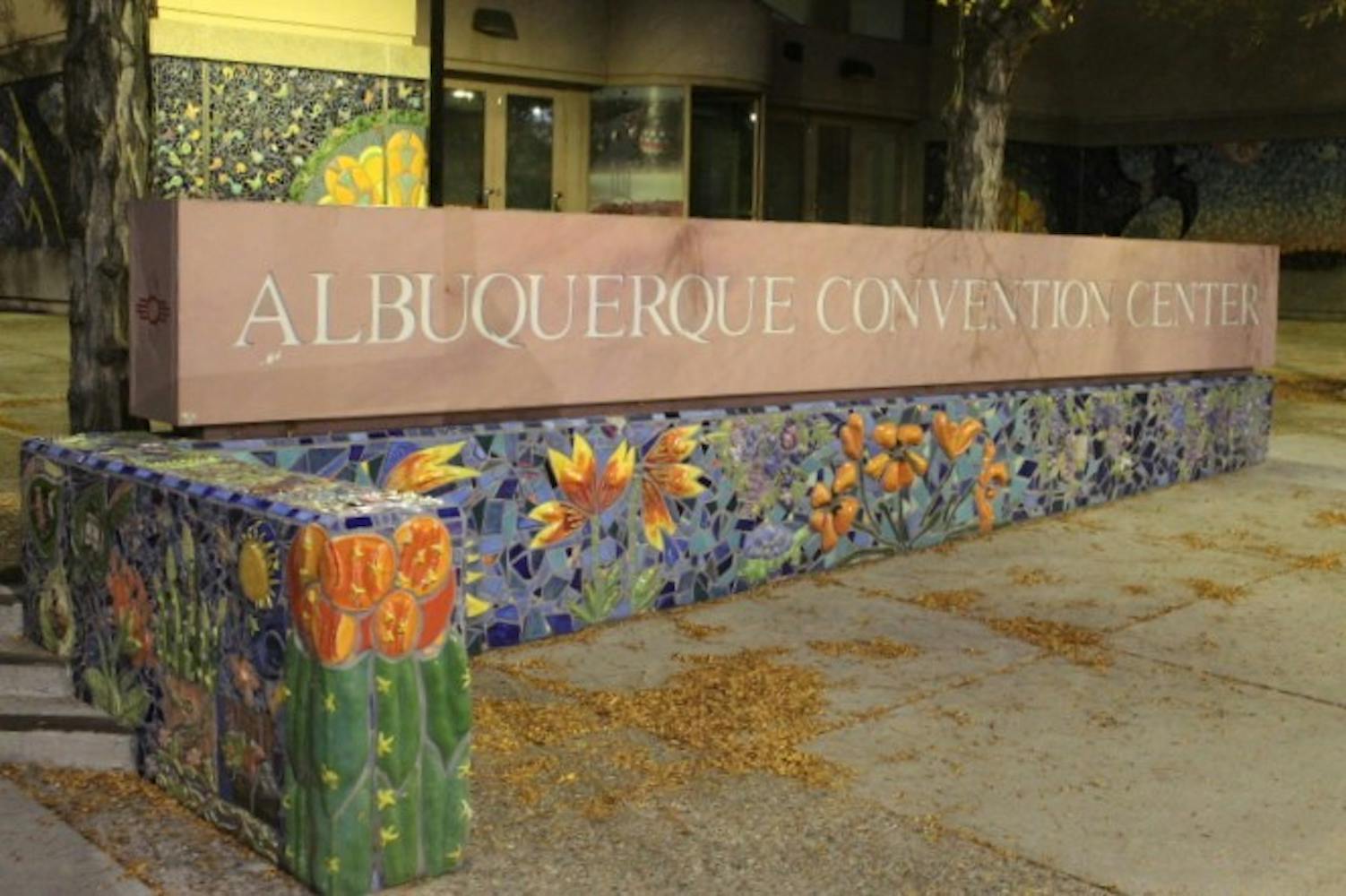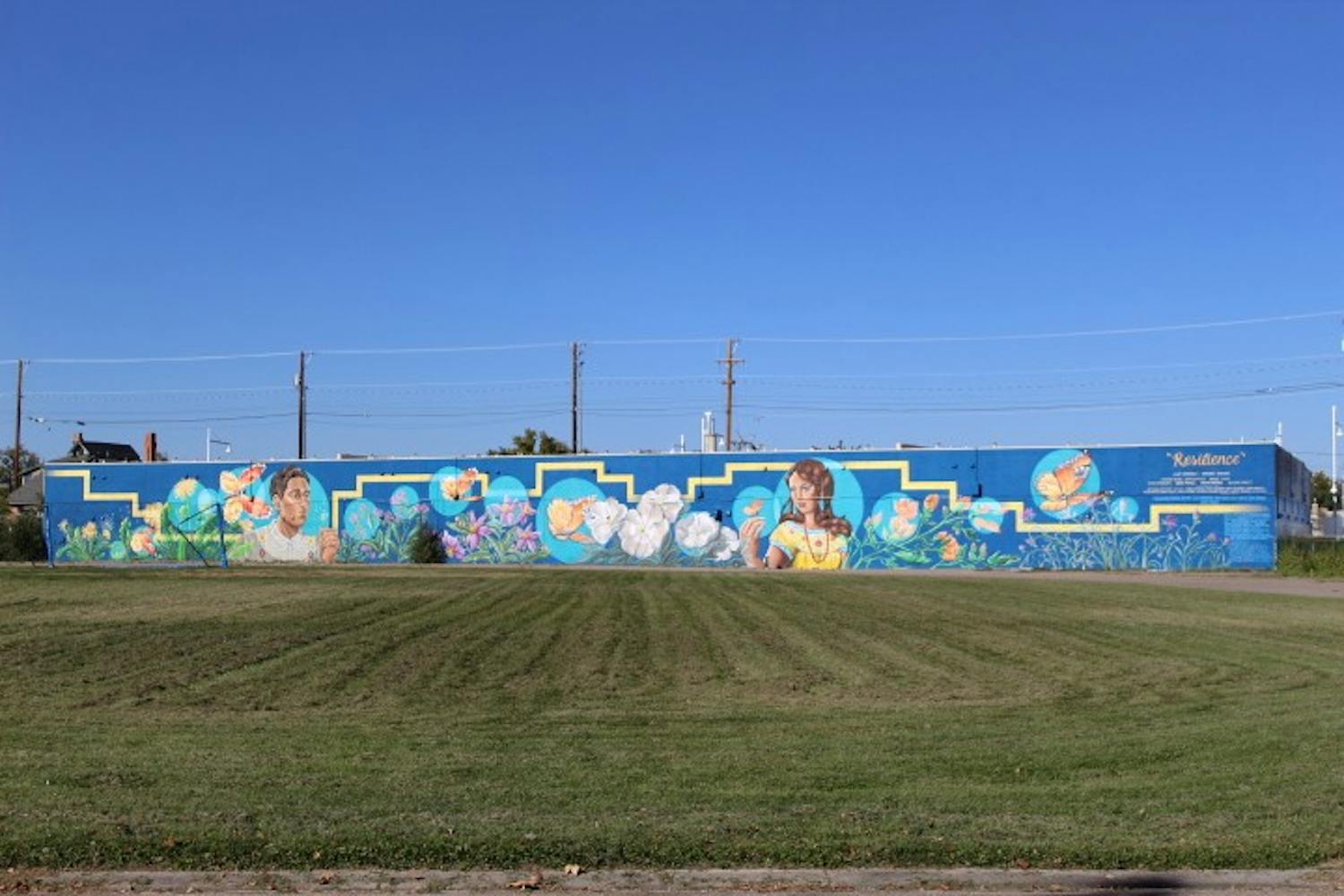For local muralists, art can serve as a powerful medium for bringing strength back to the people in times of great division and disenfranchisement. With this knowledge, mural artists here in New Mexico have created a means of revitalizing community strength through collaborative art.
“What we’re really trying to do is show that art really isn’t the enemy. It’s a tool that some people can use to gentrify a community, but we choose to use it as a tool to collaborate with the community and to be a reflection of the beauty that is already there. So, it’s not place-making, it’s place-keeping,” Vanessa Alvarado, lead artist at Apprenticeships for Leaders in Mosaic Arts, said.
ALMA is a women-led Albuquerque mosaic arts group that takes on apprentices in the community to create mosaic art; everything down to the individual tiles is handmade by ALMA apprentice artists. For Alvarado, one big purpose of ALMA is to represent women of color and those who have historically received inequitable treatment in the community.
Nani Chacon is a muralist who has worked in communities across the country. She works with community members in the area she is working in to create murals. For Chacon, murals are a form of free speech unto themselves: “A message made by the people, for the people.”
“I do think that it is impactful for people to recognize and to see themselves in their own environment. I just think that we are so bombarded by so many external propaganda and entities and a lot of it by corporations, a lot of it by way of billboards and advertising that, to see something the community made, I think, it’ll always have an integral impact,” Chacon said.
For several years, ALMA has been working on a mural at the Valle de Oro Wildlife refuge; Alvarado said this process has had a very special focus on community impact since the refuge is on ancestral Tiwa lands. Chacon sees her murals as something that is passed on to its community — not for her, but for the people around it, to understand.
“I get to learn from the people of that community … We get to share in this process of coming up with concepts and thinking about the way this work can exist in their landscape and then executing it and being able to share it … Every time it’s different: every community is different, every group of people is different and every piece comes out differently,” Chacon said.
One of her projects in Albuquerque was made in collaboration with Working Classroom, a local organization focused on teaching art to youth with a special focus on social justice. Much of their work is located in Albuquerque’s downtown area, according to Madalena Salazar, executive director of Working Classroom.
The mural with Chacon, located on the side of Washington Middle School, is called “Resilience,” which is about sharing rather than hoarding power, according to Chacon. The group collaborated with the students of the school and the neighborhood itself, even incorporating local flora into the design of the piece, according to Salazar. In the process, students learned about the cultural history and medicinal properties of the plants they chose to paint.
“It was really about the character of the neighborhood, of the downtown neighborhood, Barelas neighborhood — the future of the young people who live there. And what I love about Nani’s work is that she puts a lot of thought and brings students into the thought process of who is in this community, what do they have to say, how do they see themselves,” Salazar said.
The goal of Working Classroom is not only to teach young people how to conceptualize and work on murals but also to teach young people to listen to community perspectives and better understand the people living near the art project. For Alvarado, the process of creating the mural is often more satisfying than the mural itself.
“Art, for a long time, hasn’t reflected women, women of color, diversity — and in Albuquerque it’s especially important that we create artwork and space for people to do that, especially young artists. And I think that it brings ownership and value when they’ve made it or a family member’s made it, when they see the hard work behind it … More importantly than the product or the final murals is the process and the community and the relationships that are built during that,” Alvarado said.
Get content from The Daily Lobo delivered to your inbox
All three, however, agreed on one thing: murals are a tool to provide communities with a sense of ownership — not only to the mural itself but to their own stories and identities.
“Obviously it beautifies a neighborhood to have murals around, but it also really kind of combines the vision of the community, the identity of the community, the history of the community with the design skills and talents as well as the design skills and talents as well as the ability to translate those community visions by the artists and for us also to use artists, right? And so it’s really like this multilayered, community-driven project,” Salazar said.
Zara Roy is the copy chief at the Daily Lobo. She can be reached at copychief@dailylobo.com or on Twitter @DailyLobo








